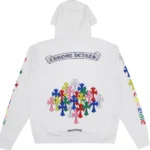Trapstar is more than just a fashion label—it’s a cultural force rooted in London’s gritty streets and pulsing with global energy. Since its underground beginnings, Trapstar has redefined modern streetwear, blending music, fashion, rebellion, and authenticity. With its signature bold designs, fearless messaging, and commitment to representing the streets, Trapstar has become a staple in the wardrobes of tastemakers, artists, and everyday trendsetters alike.
Origins in the Underground
Trapstar was founded in West London by Mikey, Lee, and Will. What began as a passion project quickly grew into something much bigger. The trio started out printing t-shirts from home and selling them informally—often directly from the trunk of a car. Their unique designs, mysterious branding, and word-of-mouth marketing helped create a cult-like buzz. Instead of chasing mainstream attention, Trapstar built its audience organically by staying close to its roots.
The name “Trapstar” itself is a combination of two worlds: the “trap,” representing hustle and survival, and “star,” symbolizing aspiration and success. This duality reflects the brand’s deeper message—rising from the bottom and claiming your space at the top.
Signature Style and Design
Trapstar’s aesthetic is raw, rebellious, and unmistakable. Known for its use of bold fonts, stark contrasts, military and dystopian inspirations, and cryptic slogans like “It’s A Secret,” the brand thrives on mystique. It’s edgy, yet wearable. Street, yet refined. Trapstar pieces often feature oversized silhouettes, tactical elements, and distressed finishes—capturing the chaos and creativity of city life.
One of the most iconic pieces in the Trapstar catalog is the puffer jacket—a winter staple embraced by fans and celebrities alike. The jackets often carry reflective panels, embroidered logos, and hidden messages, making them standout pieces in any setting.
Celebrity Co-Signs and Cultural Impact
Trapstar’s rise was fueled not just by great design but also by cultural alignment. The brand quickly found favor among major music artists, particularly in the UK grime and hip-hop scenes. Names like Skepta, Giggs, Dave, and Stormzy have all worn Trapstar, giving the label an authentic seal of approval from the culture it represents.
Internationally, Trapstar gained a powerful boost when Jay-Z and Roc Nation took notice. In 2013, the brand entered into a partnership with Roc Nation, expanding its reach beyond the UK and onto a global stage. This move introduced Trapstar to American hip-hop heavyweights and opened the door for more collaborations and collections.
Global Reach with Local Heart
Though Trapstar has gone global, it has never lost its identity. London remains its core, and the brand often pays homage to the city through its campaigns and collections. Whether it’s through location shoots in West London, collaborations with UK rappers, or drops that celebrate local culture, Trapstar remains grounded.
Flagship stores and online drops are met with massive anticipation, with limited-edition pieces selling out in minutes. This controlled scarcity has made Trapstar not only a fashion brand but also a collectible cultural artifact for streetwear lovers.
Collaborations and Limited Drops
Trapstar thrives on collaborations—whether it’s with Roc Nation, PUMA, or exclusive capsule collections tied to music events or artists. These limited drops are carefully curated and often push the boundaries of streetwear with experimental designs and high-end materials.
Each drop is treated like a cultural moment. From hidden invites to pop-up shops with graffiti backdrops and DJ sets, Trapstar makes shopping an experience, not just a transaction.
The Trapstar Mindset
At its core, Tuta Trapstar is about attitude. It represents resilience, creativity, and an unwavering belief in yourself. The brand stands as a symbol for those who come from the streets and rise above, using hustle, talent, and vision. Trapstar isn’t just worn—it’s lived.
It appeals to those who aren’t afraid to challenge the norm, who find beauty in struggle, and who strive for greatness without forgetting where they came from.
Conclusion
Trapstar is more than clothing—it’s a movement. With roots in London’s underground and branches reaching around the world, Trapstar has redefined what streetwear can be. It’s a brand built on grit, ambition, and authenticity, and it continues to inspire a new generation to dream big while staying grounded. Whether you’re rocking a signature puffer, a cryptic tee, or a pair of tactical cargos, when you wear Trapstar, you wear a piece of the culture.


